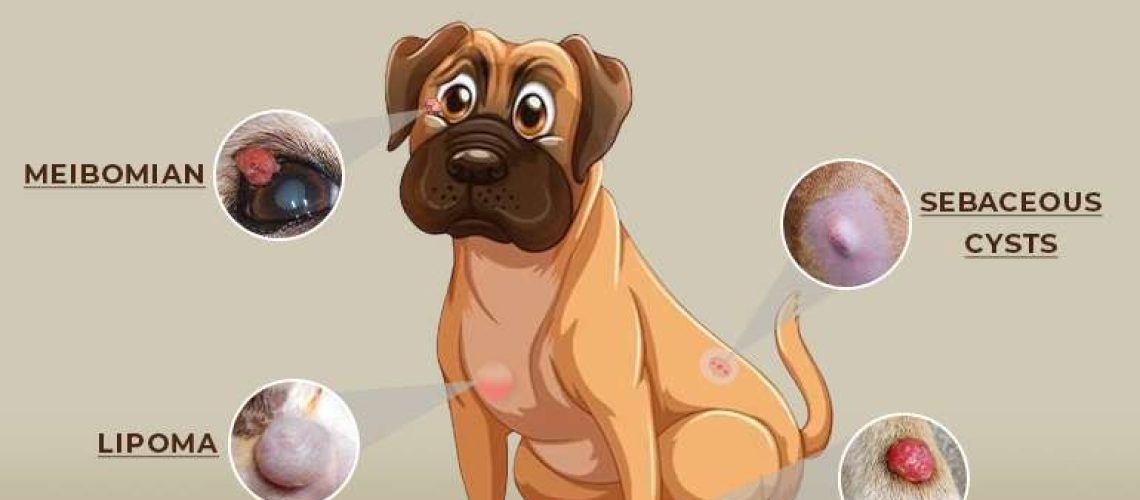Key Takeaways:
- Tumors, growths, and cysts are common in dogs and can occur in various parts of their bodies.
- Regular veterinary check-ups are important to detect any abnormal growths or changes in existing ones.
- Early detection and treatment of tumors, growths, and cysts can improve the prognosis and increase the chance of successful treatment.
- Not all growths or cysts are cancerous; some may be benign and non-threatening to the dog's health.
- If a tumor, growth, or cyst is causing discomfort or interfering with the dog's daily activities, surgical removal may be necessary.
Welcome to the fascinating world of tumors, growths, and cysts in our beloved furry friends - dogs! Exploring this subject not only provides valuable insights into our canine companions' health, but it also empowers us to ensure their well-being. Understanding these conditions is essential because knowledge is power when it comes to safeguarding our four-legged family members. So, let's dive into the realm of doggy health and uncover the mysteries behind tumors, growths, and cysts. Get ready for an enlightening journey that will equip you with the tools needed to keep your furry friend happy and healthy for years to come!
Understanding Tumors, Growths, and Cysts in Dogs
What are Tumors, Growths, and Cysts?
Tumors, growths, and cysts are abnormal lumps or masses that can develop in a dog's body. They can occur in different parts of the body such as the skin, organs, or bones.
Tumors:
Tumors are abnormal cells that multiply and form a mass. They can be either benign or malignant. Benign tumors do not spread to other parts of the body and are usually not life-threatening. On the other hand, malignant tumors can invade nearby tissues and spread to other organs, potentially causing serious health issues.
Growths:
Growths refer to any abnormal tissue that develops in a dog's body. These can include both benign and malignant tumors, as well as other types of abnormalities like warts or polyps.
Cysts:
Cysts are fluid-filled sacs that can form within or on the surface of a dog's body. They are usually non-cancerous and may vary in size. Cysts can develop due to blocked ducts or infections.
How Tumors, Growths, and Cysts Form in Dogs
Tumors, growths, and cysts form when there is an uncontrolled growth of cells in a dog's body. There are various factors that contribute to their formation:
- Genetic predisposition: Some dogs may have a higher risk of developing tumors or cysts due to their genetic makeup.
- Age: Older dogs tend to be more prone to developing these abnormalities.
- Hormonal imbalances: Certain hormonal imbalances can increase the likelihood of tumor development.
- Environmental factors: Exposure to certain chemicals or toxins may also play a role in the formation of tumors or cysts.
It's important to note that not all lumps or masses found on a dog's body are cancerous. Some may be harmless and require no treatment, while others may need medical attention.
Recognizing Signs of Tumors, Growths, and Cysts in Dogs
Detecting tumors, growths, or cysts early is crucial for proper diagnosis and treatment. Here are some signs to watch out for:
- Visible lumps or bumps: Check your dog regularly for any new or unusual growths on their skin or body.
- Changes in behavior: If your dog becomes lethargic, loses appetite, or shows signs of pain, it could indicate the presence of a tumor.
- Abnormal bleeding: Unexplained bleeding from any part of the body should be evaluated by a veterinarian.
- Difficulty breathing or swallowing: Tumors in the throat or chest can cause breathing or swallowing difficulties.
Remember that these signs can also be indicative of other health issues. It's best to consult with a veterinarian who can provide an accurate diagnosis.
Potential Harm to a Dog's Health from Tumors, Growths, and Cysts
The potential harm caused by tumors, growths, and cysts depends on their type and location. While some may be harmless and not affect a dog's health significantly, others can pose serious risks:
- Benign tumors: These usually do not spread to other parts of the body but may grow large enough to cause discomfort or interfere with normal bodily functions if left untreated.
- Malignant tumors: These can invade nearby tissues and organs, leading to organ dysfunction and potentially spreading to other parts of the body through metastasis.
- Cysts: Although most cysts are benign and do not cause harm unless they become infected or rupture, larger cysts can put pressure on surrounding tissues and cause pain or discomfort.
Early detection and proper treatment are essential to prevent further complications and ensure the well-being of the dog.
Diagnosing Tumors, Growths, and Cysts in Dogs
When a lump or abnormality is found on a dog's body, the veterinarian will conduct several diagnostic tests to determine its nature:
- Physical examination: The vet will examine the lump, assess its size, shape, and consistency, and check for any other abnormalities.
- Fine needle aspiration (FNA): A small needle is used to extract cells from the lump for microscopic examination. This can help determine if it is benign or malignant.
- Biopsy: In some cases, a biopsy may be necessary to remove a sample of tissue from the mass for further analysis under a microscope.
- Imaging tests: X-rays, ultrasounds, or CT scans may be performed to assess the extent of the abnormality and check for any signs of spread.
Based on these diagnostic findings, the veterinarian can provide an accurate diagnosis and recommend appropriate treatment options.
Treatment Options for Dogs with Tumors, Growths, or Cysts
The treatment approach for tumors, growths, or cysts in dogs depends on various factors such as their type, location, size, and whether they are benign or malignant. Common treatment options include:
- Surgical removal: If the abnormality is localized and accessible, surgical removal may be recommended. This can involve removing just the mass or also surrounding tissues if necessary.
- Chemotherapy: In cases where tumors have spread or cannot be completely removed surgically, chemotherapy drugs may be prescribed to slow down their growth or shrink them.
- Radiation therapy: This treatment involves using high-energy radiation beams to target cancer cells and destroy them. It can be used alone or in combination with surgery or chemotherapy.
- Palliative care: In situations where the abnormality cannot be completely treated, palliative care aims to provide comfort and improve the dog's quality of life through pain management and supportive measures.
The best treatment plan will be determined by the veterinarian based on the specific circumstances of each case. Regular monitoring and follow-up visits are important to ensure the effectiveness of the chosen treatment and assess any potential recurrence.
In conclusion, tumors, growths, and cysts are common in dogs and can cause various health problems. It is important for dog owners to regularly check their pets for any unusual lumps or bumps and consult a veterinarian for proper diagnosis and treatment.
What does a cancerous cyst look like on a dog?
Skin squamous cell carcinoma is the most frequently identified type of skin cancer in dogs. These tumors manifest as raised wart-like patches or lumps that have a firm texture. They are commonly found on the dog's head, lower legs, rear, and abdomen.
How do you tell the difference between a cyst and a tumor on a dog?
Differentiating between a dog cyst and a tumor can be done by examining their characteristics. Cysts are sacs filled with fluid that can be easily manipulated under the skin, whereas tumors are usually more solid. Additionally, cysts may release a discharge that can be white, yellow, or green.
How long can a dog live with cancerous tumors?
Again, this varies on a case-by-case basis. The prognosis depends on the aggressiveness and stage of the cancer. After detection, some dogs may only have weeks to months to live, while others can survive for years. For example, dogs with lymphoma can live for several years.
What does a non cancerous tumor look like on a dog?
These growths resemble warts but are not caused by a virus like typical warts (papillomas). They can be easily removed and pose minimal risk to the dog's overall health. For information on viral warts, refer to the section below.
What does a cancerous growth on a dog look like?
Squamous cell carcinoma is the most frequently diagnosed type of skin cancer in dogs, particularly in older animals. It presents as elevated wart-like patches or solid lumps that can be felt. These tumors are usually found on the dog's head, lower legs, rear, and abdomen.
Are cancerous growths on dogs hard or soft?
A useful method for identifying a possibly cancerous lump is to assess its texture when touched. In contrast to the soft and fatty texture of a lipoma, a cancerous lump will feel harder and more solid to the touch, presenting as an immovable and firm lump on your dog.

















